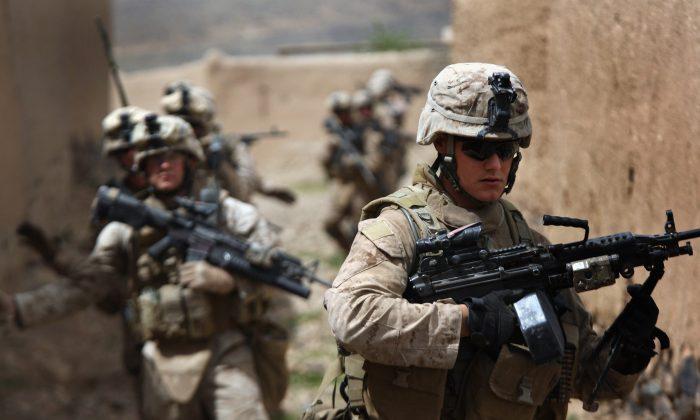When Department of Defense (DoD) force planners use planning constructs and deployment scenarios to estimate force requirements, they assume that U.S. military interventions occur independently of each other, meaning that the likelihood of each deployment is unaffected by the timing or frequency of past deployments.
However, U.S. experiences in Southeast Asia during the 1960s, the Balkans during the 1990s, and the Middle East since 2001 suggest that military interventions may not be independent but may instead exhibit temporal dependence; that is, one intervention may increase the likelihood of subsequent interventions in the near future. If true, interventions would be more likely to occur in clusters. A clustered pattern of interventions would result in different demands for U.S. military capabilities than those current DoD approaches to force planning produce.
This report assessed whether there is empirical evidence of temporal dependence in U.S. Army interventions and, similarly, whether armed conflicts themselves exhibit the same pattern. The author analyzed 66 cases of U.S. Army interventions from 1949 to 2010, defining intervention as an Army deployment of company size or larger for contingency and peacekeeping (or peace enforcement) operations, thus excluding air strikes, airlift, humanitarian operations, sea- and air-based noncombatant evacuations, and small deployments of U.S. military advisers and trainers.
The analysis tested for a dependent relationship between military interventions in one period and those before it and incorporated intervening factors that might affect the likelihood of military interventions and intervention clusters. These factors include underlying domestic political characteristics (U.S. presidential popularity), economic trends (U.S. gross domestic product and unemployment), and strategic contexts (relative U.S. power, level of international conflict, and the collapse of the Soviet Union).
Findings
The analysis found evidence that U.S. military interventions since 1949 have been temporally correlated: Deployments are more likely to occur in clusters than in randomly or evenly distributed patterns. Each new intervention in one period increases the likelihood of an additional intervention in the next by at least 20 percent and possibly as much as 50 percent. The magnitude of this effect is significant, especially compared with the current assumption that interventions are independent. The analysis also found that the likelihood of clustered deployments may be influenced by the overarching geopolitical regime, that is, the aggregated effect of systemic characteristics, such as the international balance of power, the economic and trade infrastructure, and global security threats and postures. There is some evidence that clustered deployments have been more likely since the fall of the Soviet Union than during the Cold War. As shown in the figure, the number of U.S. interventions also increased dramatically over this period, especially between 1988 and 2004.

In contrast, the analysis found little evidence that armed conflicts cluster in regular or systematic patterns, after controlling for underlying global geopolitical and economic conditions. U.S. military planners generally assume that the likelihood and nature of future conflict can be predicted using the frequency of past conflicts. The results suggest that this is a reasonable assumption only if planners are sure that the “past” on which they base their analysis has the same fundamental geopolitical characteristics as the current geopolitical regime. Tracking geopolitical characteristics associated with either the clustering of interventions or the incidence of conflict over time may allow planners and decisionmakers to quickly recognize changes within the international system that might lead to new demands on military personnel in the form of new conflicts or deployments.

Implications for Policy
These findings have three broad implications for DoD force planners and the defense analytical community:
1. Current force planning approaches likely underestimate force requirements during periods of clustered interventions. The fact that U.S. military interventions tend to cluster together in time implies that force planning frameworks that assume that interventions are independent over time may underestimate requirements for forces and capabilities during a period of clustered interventions. This may create operational and strategic risk, and DoD should consider modifying its integrated security constructs to incorporate the existence of a temporal relationship between interventions that may contribute to clustering.
2. Force planners should account for existing and possible future geopolitical regimes in their estimates of force requirements. The likelihood of interventions and the potential for clustering is sensitive to the character of the existing geopolitical regime. This suggests that the pattern of future military operations projected using a force planning framework reflects important, if implicit, assumptions about the nature of future geopolitical regimes. It would be prudent for DoD to make these assumptions explicit and consider whether the existing set of force planning frameworks covers the full spectrum of potential global political, economic, and security infrastructures that the U.S. might face in the future. This set of alternative futures might include the rise of new military challengers, an increase in regional political instability, repeated economic shocks, or a combination of other systemic characteristics. Alternative assumptions about the future geopolitical regime may provide a strategically coherent basis for developing alternative integrated security constructs.
3. DoD needs metrics to help it understand the likelihood and implications of clusters for force planning. DoD planning documents should incorporate quantitative metrics that shed light on the likelihood of intervention clusters at given times and acknowledge that there is a temporal relationship between interventions, drawing implications accordingly.
Article originally published by the RAND Corporation, a nonprofit research institution that helps improve policy and decisionmaking through research and analysis. RAND’s publications do not necessarily reflect the opinions of its research clients and sponsors. Read the original. This is a research brief of the report “Are U.S. Military Interventions Contagious over Time? Intervention Timing and Its Implications for Force Planning.”

Friends Read Free